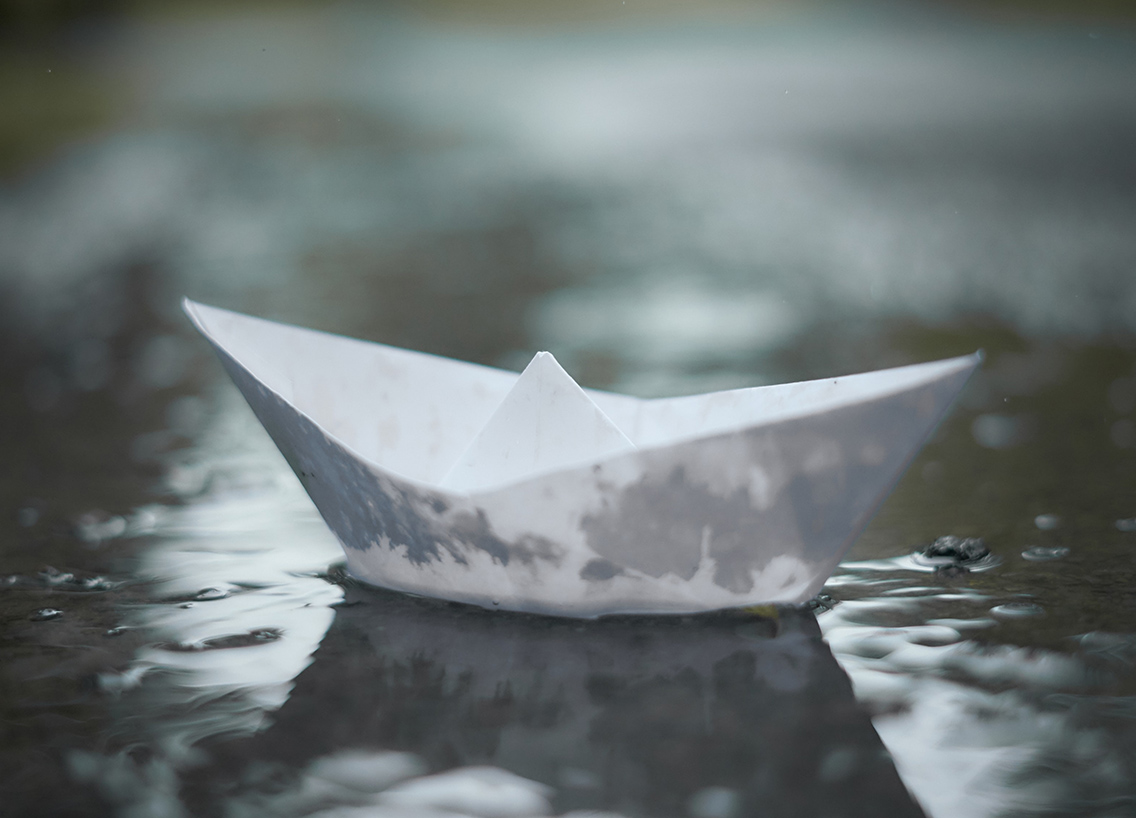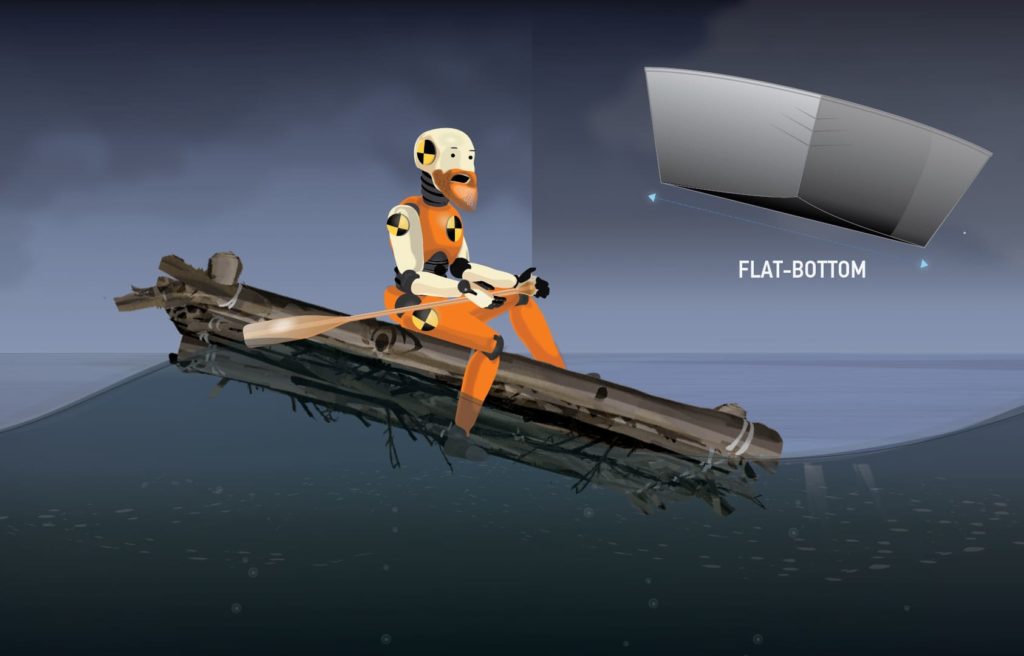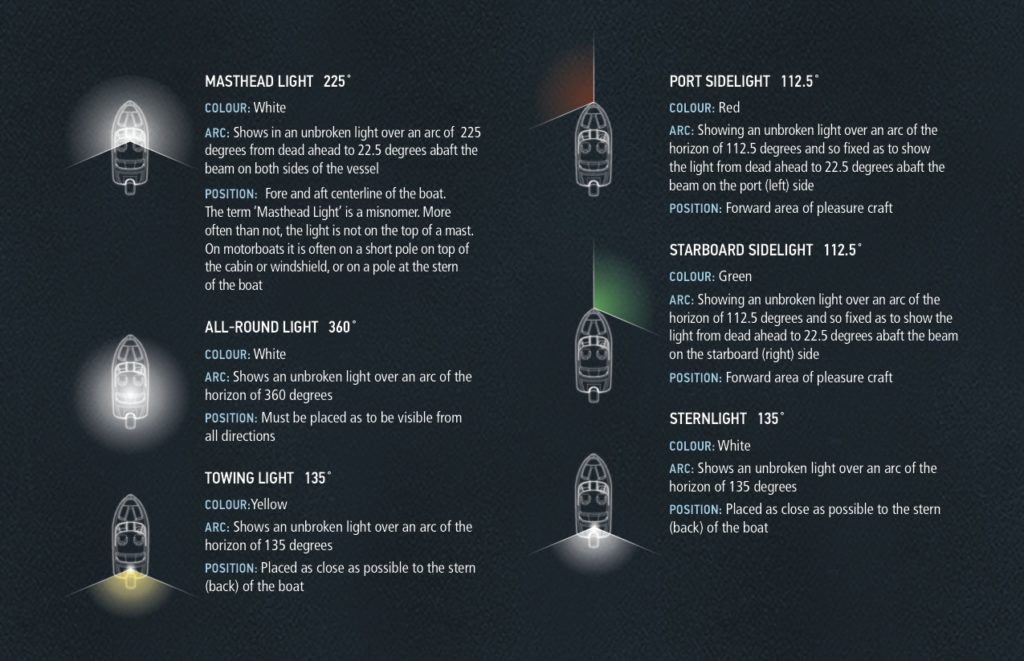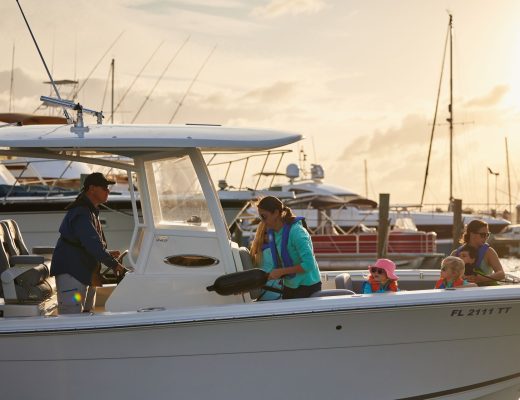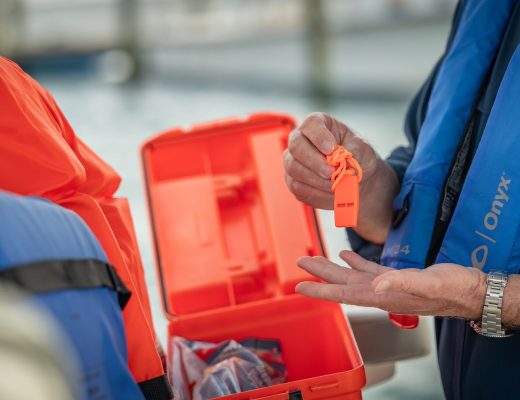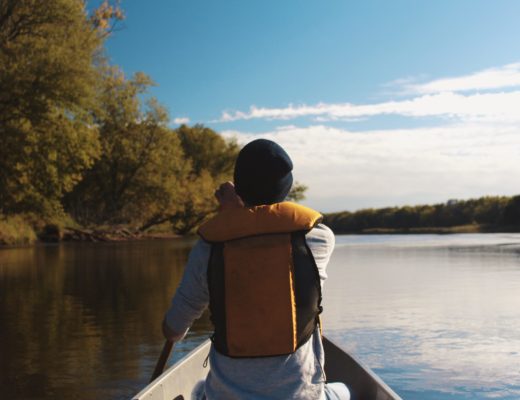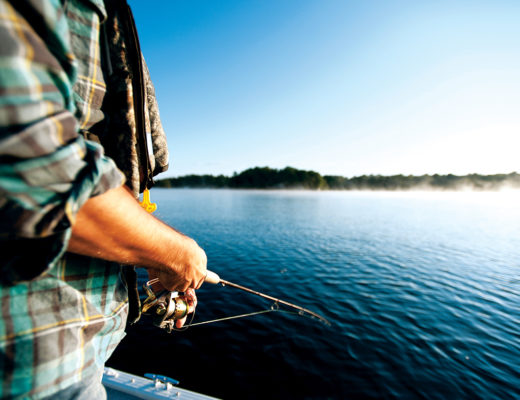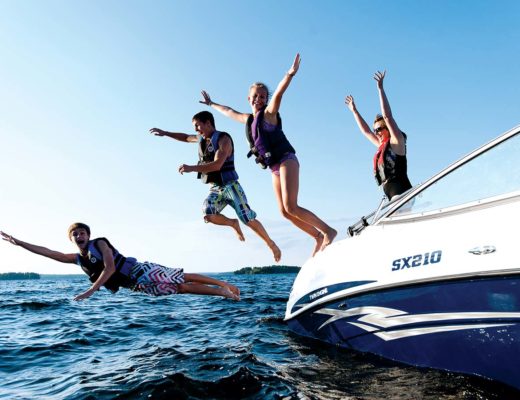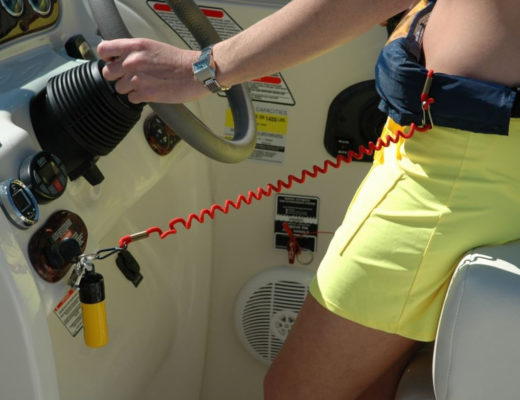In the event that you’re enjoying a beautiful day on the water, but within a few minutes, the skies turn, and stormy weather is inevitable, you must be able to evaluate the urgency of your situation to avoid a boating accident. How far are you from shore? Do you have all your safety gear on board? Do you have the skills necessary to operate your boat in stormy weather?
At moments like this, it’s best to stay calm and remember what you’ve learned to avoid a bad situation on the water.
It’s easy to mitigate the risks of boating and stay safe during a storm with the following six tips for avoiding an accident. So, stay low, put on your rain jacket, and let’s begin.
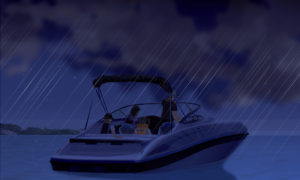
1. Check Local Weather and Water Conditions
Before you even leave the dock, you should check the local weather and water conditions in your area. This is an easy way to prevent yourself and your crew members from becoming stranded or from getting into a boating accident because of the storm.
Unexpected weather, like thunderstorms and lightning, can roll in quickly, so the best practice is to be prepared.
You can find the latest weather reports by turning on your T.V., tuning into your VHF radio, or simply going outside and taking a good look at the sky and the water. Official weather reports for boaters are also provided through the NOAA (National Oceanic and Atmospheric Administration).
If the skies look clear, you’re probably good to go on that boating trip! However, that’s not an invitation to skip the step of checking the weather forecast! You should always be looking a few hours ahead and planning for the day.
If you don’t want to get stuck in a storm, check the weather before you leave the dock. Remember, as the Captain, it’s your responsibility to decide whether to adjust your trip plan or stay on shore.
Bad Weather Boating Requires Skills
Operating a boat safely requires skill and knowledge. However, if you get caught in bad weather, you’ll need advanced operating skills to return to the dock safely—particularly if your boat is difficult to operate in bad weather, like flat-bottom boats. Flat-bottom boats are great for activities like fishing in smaller lakes and rivers but are bumpy in choppy waters.
Return to Shore for Safety
Don’t take the risk of operating your boat in bad weather. Always return to shore if you come across any dangerous weather conditions, such as:
- Fog, dark clouds, and lightning
- A falling barometer (this means rain is coming)
- Drops in temperature (this means a storm is coming)
- Puffy, vertically rising clouds
Safe Boating Tip: Know your boat’s range and plan your trip to stay within it.
2. Display the Appropriate Navigation Lighting Equipment
Whether it’s a foggy day, a late-night return from the cottage across the lake, or an early morning fishing trip, you must display the proper navigation light equipment when your boat is underway or at anchor. Boating without the proper lighting on your vessel can lead to serious or fatal injuries if you collide with something in the water, another boat, or a dock.
Safe Boating Tip: Boaters are required to display navigation lights whenever they operate a boat between sunset and sunrise and when visibility is reduced while on the water, like during foggy weather, heavy rain, or darkness.
Are you a little fuzzy on your knowledge about navigation lights? Don’t worry! Check the image below to refresh your memory.
Hint: you can download this chart to your phone or print it for easy reference.
Of course, different types of boats require different navigation lights. To learn more about navigation lights and determine which are required for your boat, sign up for your BOATsmart! online course and test.
3. Keep Marine Charts on Your Boat at All Times
Once you’re out on the water, technology can be your friend. Depth finders, GPS technology, radio systems, smartphones, and other electronic equipment can help you avoid hidden obstacles and navigate back to shore.
However, technology is not 100% reliable, especially away from the shore. Plus, there may be other times when your electronics shouldn’t be used (like during a lightning storm).
Marine charts are an amazing go-to resource, and they won’t let you down (or lose battery power!). These extremely handy resources should always be consulted before you enter a new waterway. They’ll help you identify local hazards, such as trees, rocks, and sandbars, that could put a dent in your trip (and your boat).
Using marine charts to help you navigate your boat is one of the best ways to prevent being in a boating accident.
4. Use a Trip Plan
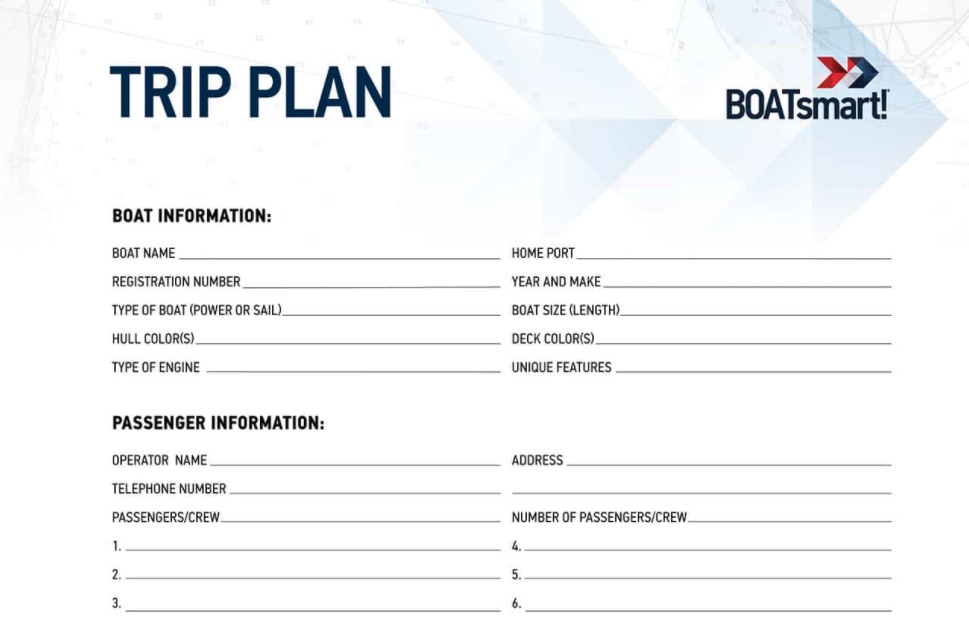
If we told you that there was a boating safety resource that was free, easy to use, could be filled out in under five minutes, and could save your life, would you use it?
We hope so!
This document is called a “Trip Plan,” and it can make the difference between a great day on the water and a day ending with a search party. Leaving a trip plan on shore with someone you trust is like leaving a trail that can be followed by anyone who may be searching for you.
Always leave your trip plan with a responsible person on shore or with the local marina. If you don’t return, the person with your trip plan will use the information to help rescue teams locate you.
These plans are fun to develop with friends and family and help involve everyone in the process.
Leave Tracks to Help People Find You
Even if you’re excited and in a hurry to get out on the water, leave tracks. After all, it’s not much work to send a text or an email, to make a phone call, or to leave a note. You can even leave a status update on Facebook with the following information that will help point your friends to your whereabouts:
- What are you doing?
- Where are you going?
- When will you return?
- Who are you going with?
Keeping at least one person shore informed about your trip can help you and your passengers receive a faster rescue and return home safely after a boating accident.
5. Know How to Operate Your Boat in Stormy Weather
We mentioned this earlier, but let’s talk about it in more detail.
Should you get caught out in a storm, your Captain’s skills will be tested. Many factors come into play, like your passengers’ locations on the boat, your speed of travel, your use of navigation lights, and more.
If you get caught in a storm, take the following actions to prevent a boating accident:
- Make sure every passenger is wearing a lifejacket
- Reduce your speed and maintain your movement forward
- Turn on your required navigation lights
- Seat all passengers on the bottom of the boat, along the centre line
- Stow away any loose gear
- Cut through large waves at a 45-degree angle to reduce the chance of being swamped
- Keep the bilges free of water in order to stay well above water level
- If it’s safe to do so, head towards shore
Stay calm and let your skills and knowledge help you navigate the rough waters to avoid an accident.
Anchoring Your Boat
If you get caught in a storm and are unable to return to shore safely, you should anchor your boat. Here’s how:
- Step 1: Angle the boat as though you were still moving at a 45-degree angle headed into the waves. This will help prevent your boat from drifting or being swamped by waves.
- Step 2: Drop the anchor from the bow of the boat (If you find yourself without an anchor, the Coast Guard recommends using a bucket and rope as an emergency anchor)
- Step 3: Stay low in the boat and turn off the electrical equipment while you wait for the storm to pass
- Step 4: Use your sound signaling device to indicate to other boaters that you’re at anchor (sound a signal rapidly for about 5 seconds, in intervals of not more than 1 minute)
- Step 5: If you find yourself in need of rescue, use the appropriate visual distress signal equipment (like a flare)
NOTE: If you cannot reach your destination safely, you should seek shelter for the duration of the storm
6. Wear Your Life Jacket
Lastly, and most importantly, ensure everyone is wearing a life jacket.
We know: you’ve heard this a thousand times. They’re uncomfortable and bulky and get in the way of the perfect boating selfies. But to be fair, they can and do save lives every year.
It’s a small but important ask. Please do the responsible thing and encourage everyone to wear a life jacket.
Check out the video below to learn a little more about lifejackets.
Avoid a Boating Accident with a Boating Course
Alright, Captain, it’s your time to shine. With a little bit of planning, you and your family can stay safe while having a ton of fun on the water this summer.
Make sure your planning includes that boater education course we mentioned earlier. We’ve mentioned six crucial tips here, but there’s much more to learn about navigating the waters safely. Not only can this knowledge save lives, but it’s also a requirement for legal boating in Canada and the U.S.
If you’re in Canada, take your online course through BOATsmart! and purchase your boater cards through our website, too. In the U.S., choose the state-approved course for your area and start learning.
Happy boating!
Originally published July 19, 2016. Content most recently reviewed and updated July 29, 2024.
